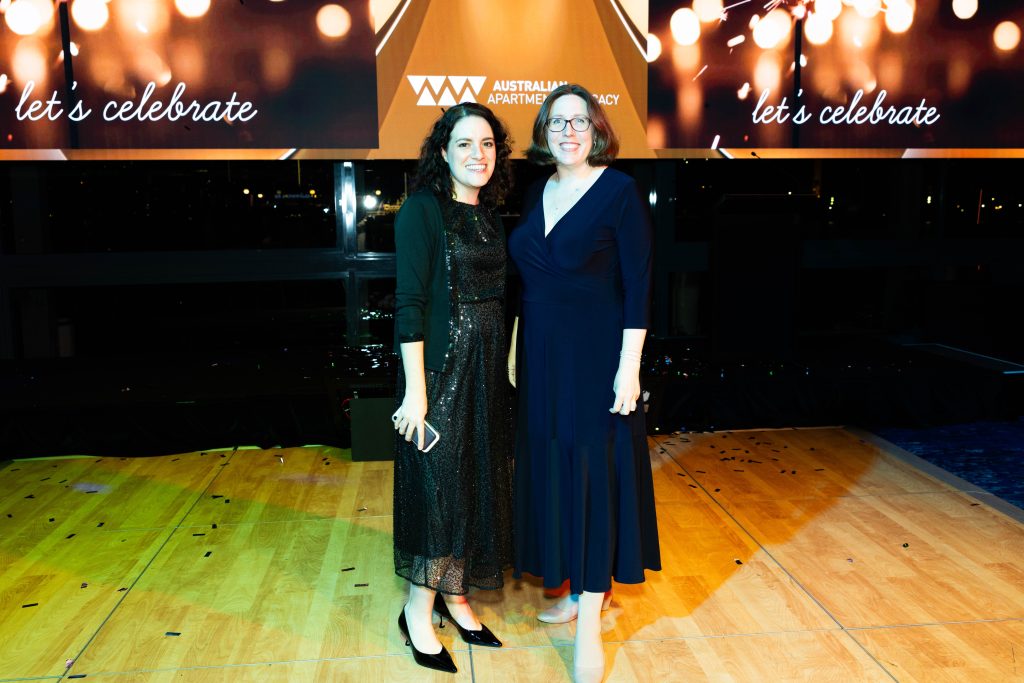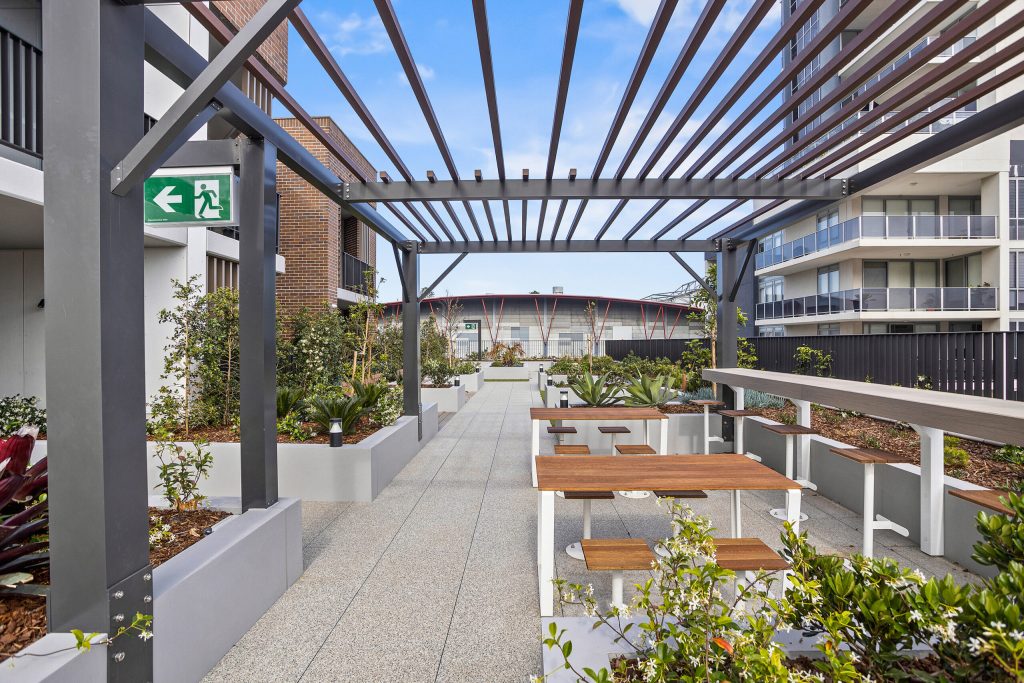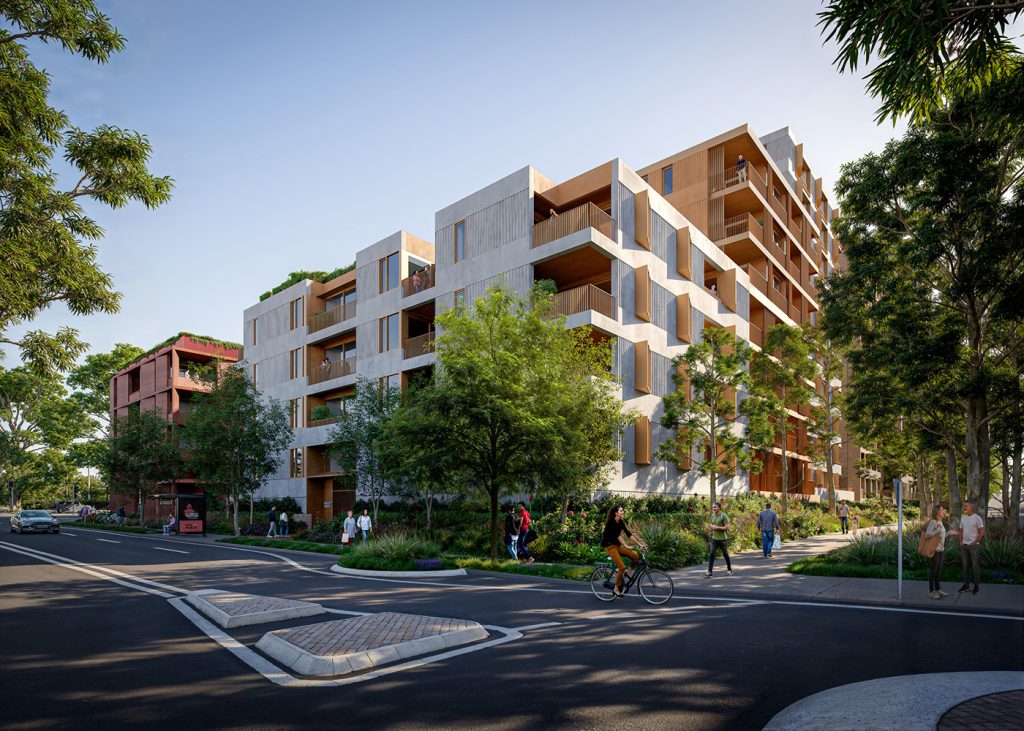From Compliance to Performance: Lessons from NSW Housing – Part 1
Affordable and Social Housing is often where best practice quietly thrives, offering valuable lessons for the broader sector. As part of the judging panel at the 2025 Apartment Advocacy (AA) Awards of Excellence (NSW) Alison Adendorff identified several trends which stood out, particularly in the evolution of Affordable and Social Housing.
 Atelier Ten team attending the Apartment Advocacy awards (NSW)
Atelier Ten team attending the Apartment Advocacy awards (NSW)
Lessons from Affordable and Social Housing
- Across NSW, modern Affordable and Social Housing developments are increasingly indistinguishable from private housing developments. Visual integration with the surrounding urban context can mitigate stigma and improve social cohesion – encouraging broader acceptance and support for Affordable and Social Housing projects within communities.
- Affordable and Social Housing often includes purposefully designed spaces for residents to meet — such as shared kitchens, and outdoor spaces. These “coffee with your neighbour” moments build social fabric and contribute to community resilience. In contrast, many private apartments prioritise yield over genuine communal amenity. While amenities like gyms or rooftop terraces are often included in private developments, they may not be designed to encourage interaction among residents.
- When people have regular opportunities to interact — in shared gardens, plazas, community rooms, or kitchens — they build trust, empathy, and familiarity. These social bonds form the foundation of mutual support in times of need, whether during personal crises or collective shocks like natural disasters or pandemics.
- Connected communities are more likely to share skills, time, tools, and local knowledge. This reduces individual vulnerability and creates collective strength, especially important in times of economic pressure or service disruption.
- Affordable and Social Housing projects such as Northsea, Wollongong by Traders in Purple, Housing Trust & Homes NSW are making effort to move beyond minimum sustainability requirements, incorporating features like community solar panels, and energy-efficient systems to reduce long-term operational costs. The project was recognised at the AA Awards of Excellence (NSW), winning the diversity in housing choice category and receiving special commendation for affordability. Educating private developers on the long-term cost benefits and market appeal of sustainable design can promote more environmentally responsible construction practices.
- To ensure sustainable systems deliver long-term benefits, developers need education, clear handover documentation, and facilities teams trained in managing energy and water systems effectively.
 Northsea Wollongong, AA Awards of Excellence Winner by Traders in Purple, Housing Trust & Homes NSW
Northsea Wollongong, AA Awards of Excellence Winner by Traders in Purple, Housing Trust & Homes NSW
Crafting a Vision for Stronger Returns
The most successful projects embed sustainability thinking from day one — not as a post-DA exercise, but as a way to align design, planning and investment. When project teams define a clear sustainability vision early, it supports internal alignment, investor confidence, and streamlined approvals.
A strong vision is more than an internal guide. It helps build alignment, supports clear communication with stakeholders, and ensures that sustainability becomes a defining quality of a place. Through early collaboration, Atelier Ten has curated half day workshops to develop achievable sustainability visions that are tailored to place.
At Redfern Place, for example, we worked with the team to imagine a future focused urban neighbourhood shaped by respect for Country and community. The sustainability vision embedded key principles including affordability, resilience and circularity, drawing on Indigenous knowledge and place-based design. This vision informed the SSDA ESD Report, ensuring that sustainability commitments were embedded from strategy through to delivery.
From community housing to high-end apartments, the most successful projects are those that embed sustainability early and use compliance as a catalyst for innovation. Atelier Ten helps clients and collaborators embed sustainability early, translating technical targets into holistic, human-focused design strategies. By advocating for integration, clarity, and ambition, we support homes that are comfortable, cost-effective, and ready for the future.
 Redfern Place (NSW) designed by Hayball
Redfern Place (NSW) designed by Hayball
High Performance Outcomes that Buyers Notice
Successful projects emphasise benefits occupants can feel every day:
- Consistent thermal comfort, through façade optimisation – without over-sized air-conditioning.
- Healthy interiors with daylight, fresh air and sustainable finishes.
- Lower energy bills through all-electric services, efficient envelopes and on-site renewables.
- Shared spaces that build community, from productive rooftops to adaptable lounges.
Each of these also supports stronger leasing velocity, reduced churn and higher valuations. These deeper layers of performance contribute to healthier more resilient neighbourhoods – outcomes increasingly aligned with planning incentives and buyer expectations.
From Compliance to Performance: Lessons from NSW Housing
The themes emerging from today’s best social and affordable housing are clear: start with an agreed sustainability vision, give residents spaces that foster community, and prioritise passive performance before adding technology. But how can mainstream residential projects replicate those gains when BASIX still sets the rule book?
Part 2 will explore design levers that help development teams treat BASIX as a springboard, not a ceiling – showing how to lift market value, smooth approvals and strengthen ESG credentials, all within commercial realities. Continue reading for a practical playbook that turns compliance into competitive advantage.